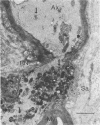Abstract
Penetration of the central nervous system of the adult rat by the CVS strain of rabies virus and its two avirulent derivatives Av01 and Av02 has been studied by inoculation of the virus into the anterior chamber of the eye. The primary sites of penetration of CVS were (i) the intraocular parasympathetic oculomotor fibers, (ii) the retinopetal fibers of pretectal origin, and (iii) the intraocular fibers of the ophthalmic nerve. The mutant strains, however, lost the capacity to invade the two former groups of fibers, although their penetration into the trigeminal system was not impaired. Neither strain CVS nor the mutants infected primarily the intraocular adrenergic terminals and the optic nerve. Mutant strains, but not CVS, were able to infect the lens. These results indicate that the cholinergic receptor may not be the only receptor for rabies virus and that rabies virus is conveyed in the nervous system by retrograde axoplasmic flow. Strain CVS spread throughout the brain and propagated eventually back to the retina. The mutants penetrated the brain as well, but the infection was slow, involved different cerebral structures, and cleared up completely in 3 weeks, probably because of an efficient immune response.
Full text
PDF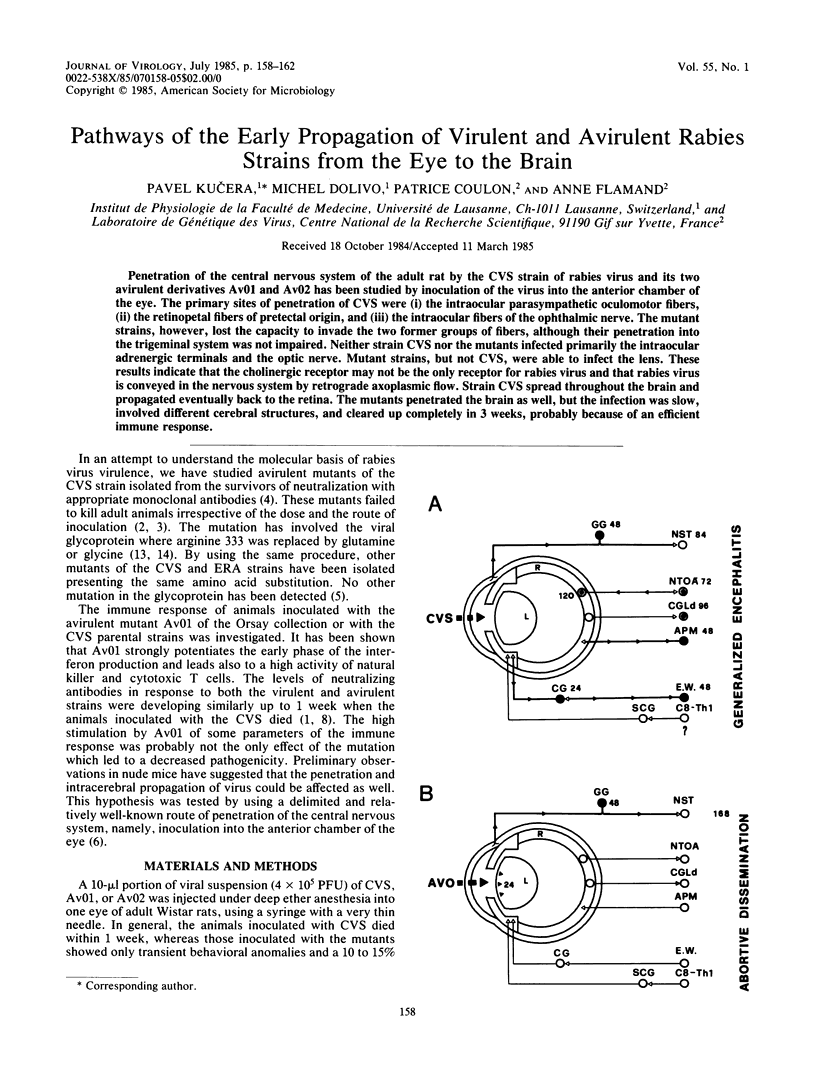
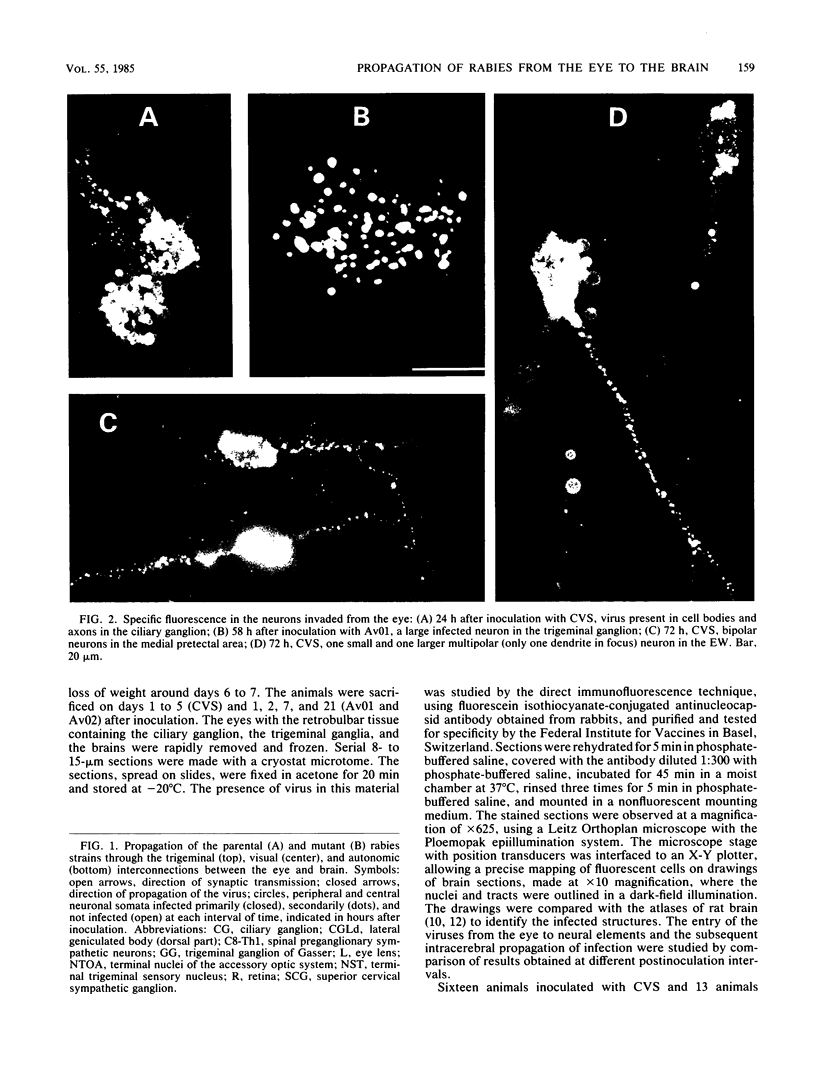
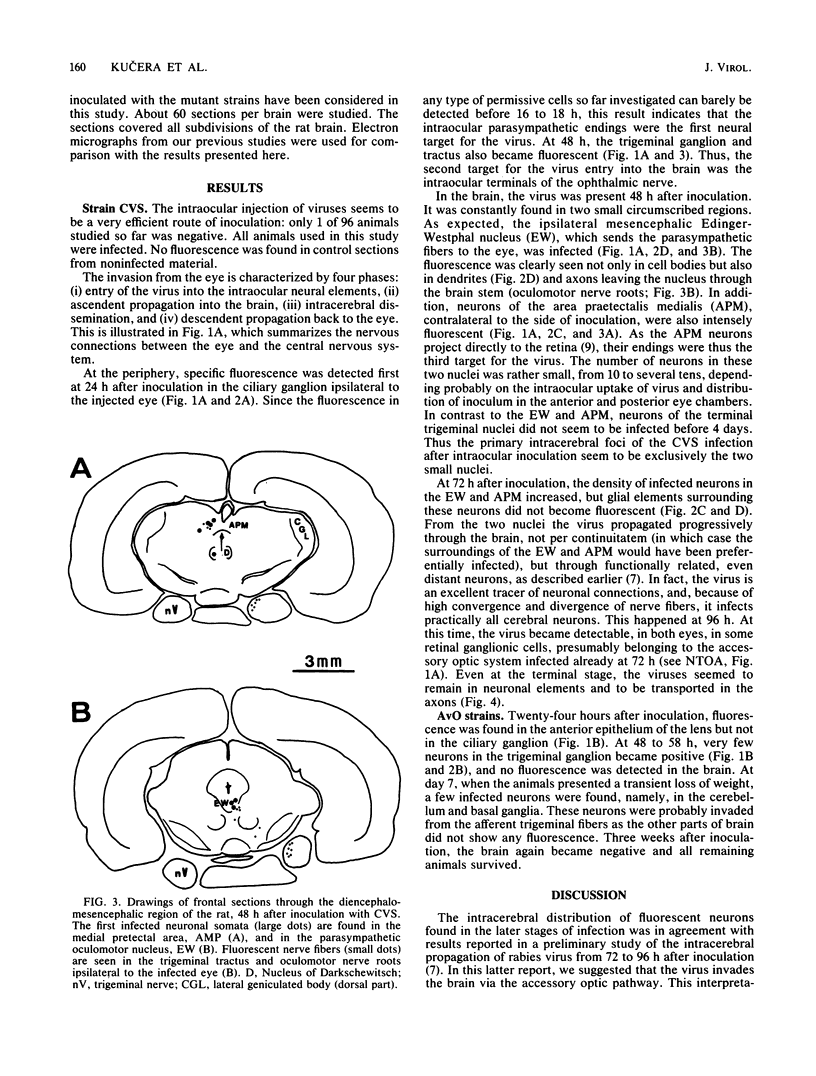
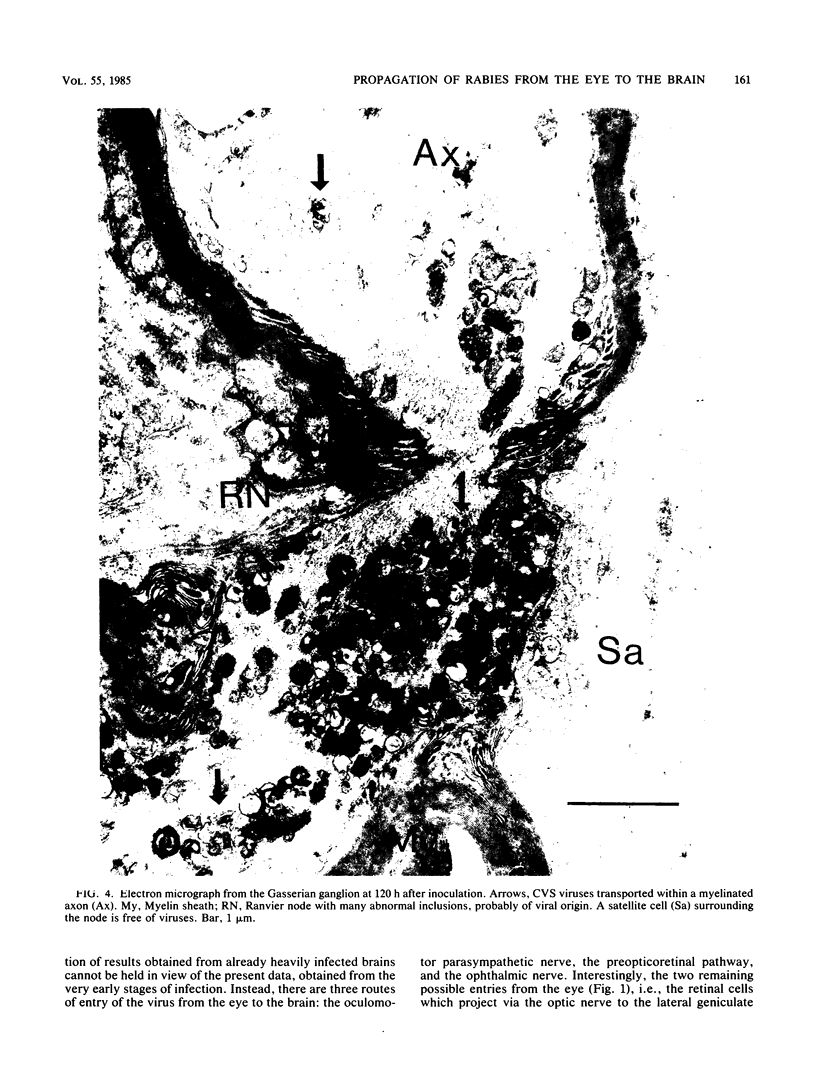
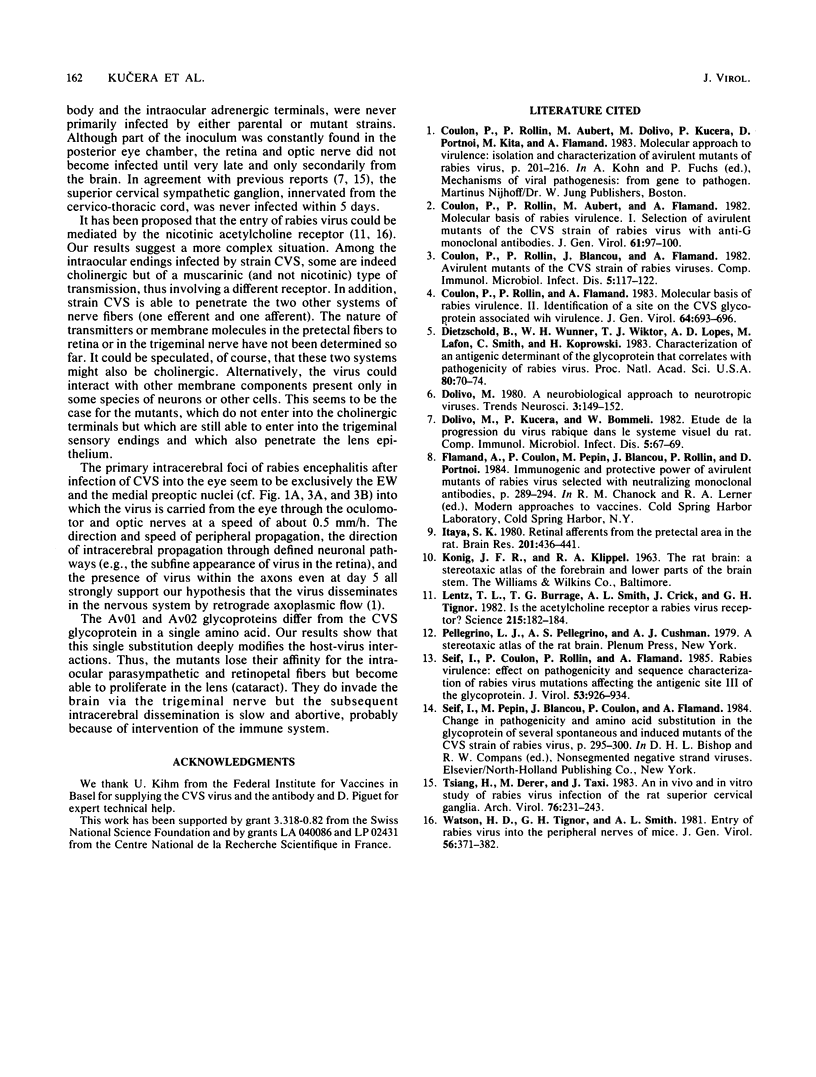
Images in this article
Selected References
These references are in PubMed. This may not be the complete list of references from this article.
- Coulon P., Rollin P. E., Flamand A. Molecular basis of rabies virus virulence. II. Identification of a site on the CVS glycoprotein associated with virulence. J Gen Virol. 1983 Mar;64(Pt 3):693–696. doi: 10.1099/0022-1317-64-3-693. [DOI] [PubMed] [Google Scholar]
- Coulon P., Rollin P., Aubert M., Flamand A. Molecular basis of rabies virus virulence. I. Selection of avirulent mutants of the CVS strain with anti-G monoclonal antibodies. J Gen Virol. 1982 Jul;61(Pt 50):97–100. doi: 10.1099/0022-1317-61-1-97. [DOI] [PubMed] [Google Scholar]
- Coulon P., Rollin P., Blancou J., Flamand A. Avirulent mutants of the CVS strain of rabies virus. Comp Immunol Microbiol Infect Dis. 1982;5(1-3):117–122. doi: 10.1016/0147-9571(82)90024-8. [DOI] [PubMed] [Google Scholar]
- Dietzschold B., Wunner W. H., Wiktor T. J., Lopes A. D., Lafon M., Smith C. L., Koprowski H. Characterization of an antigenic determinant of the glycoprotein that correlates with pathogenicity of rabies virus. Proc Natl Acad Sci U S A. 1983 Jan;80(1):70–74. doi: 10.1073/pnas.80.1.70. [DOI] [PMC free article] [PubMed] [Google Scholar]
- Dolivo M., Kucera P., Bommeli W. Etude de la progression du virus rabique dans le système visuel du rat. Comp Immunol Microbiol Infect Dis. 1982;5(1-3):67–69. doi: 10.1016/0147-9571(82)90016-9. [DOI] [PubMed] [Google Scholar]
- Itaya S. K. Retinal efferents from the pretectal area in the rat. Brain Res. 1980 Nov 17;201(2):436–441. doi: 10.1016/0006-8993(80)91049-5. [DOI] [PubMed] [Google Scholar]
- Lentz T. L., Burrage T. G., Smith A. L., Crick J., Tignor G. H. Is the acetylcholine receptor a rabies virus receptor? Science. 1982 Jan 8;215(4529):182–184. doi: 10.1126/science.7053569. [DOI] [PubMed] [Google Scholar]
- Seif I., Coulon P., Rollin P. E., Flamand A. Rabies virulence: effect on pathogenicity and sequence characterization of rabies virus mutations affecting antigenic site III of the glycoprotein. J Virol. 1985 Mar;53(3):926–934. doi: 10.1128/jvi.53.3.926-934.1985. [DOI] [PMC free article] [PubMed] [Google Scholar]
- Tsiang H., Derer M., Taxi J. An in vivo and in vitro study of rabies virus infection of the rat superior cervical ganglia. Arch Virol. 1983;76(3):231–243. doi: 10.1007/BF01311107. [DOI] [PubMed] [Google Scholar]
- Watson H. D., Tignor G. H., Smith A. L. Entry of rabies virus into the peripheral nerves of mice. J Gen Virol. 1981 Oct;56(Pt 2):372–382. doi: 10.1099/0022-1317-56-2-371. [DOI] [PubMed] [Google Scholar]




